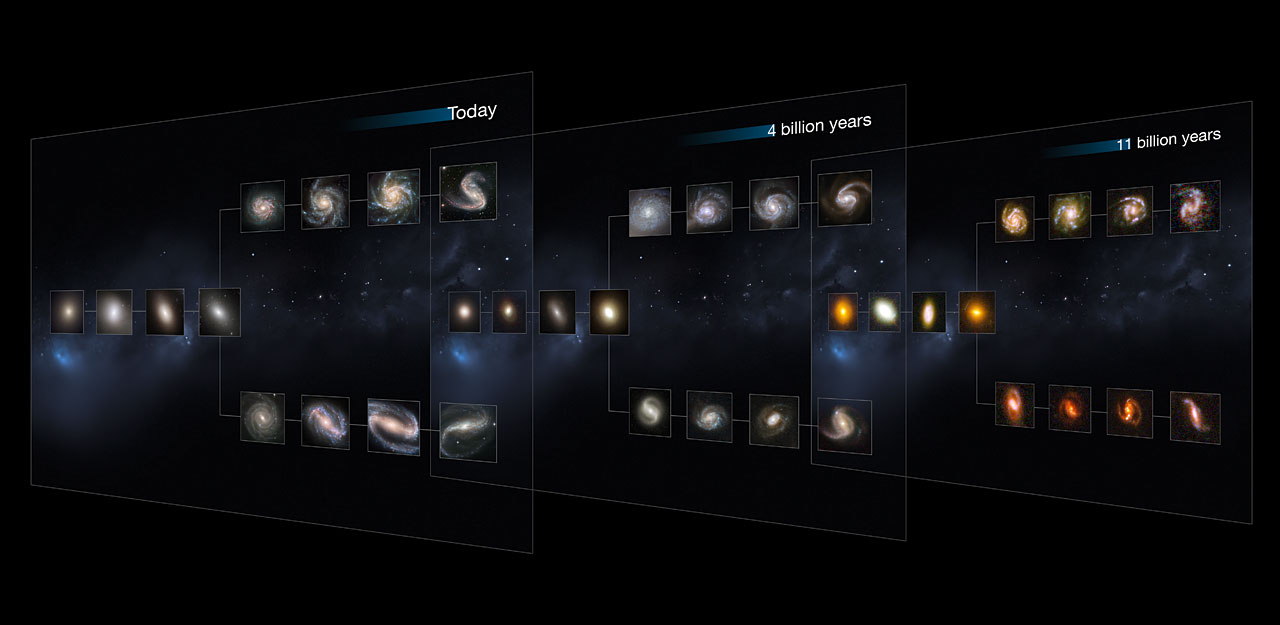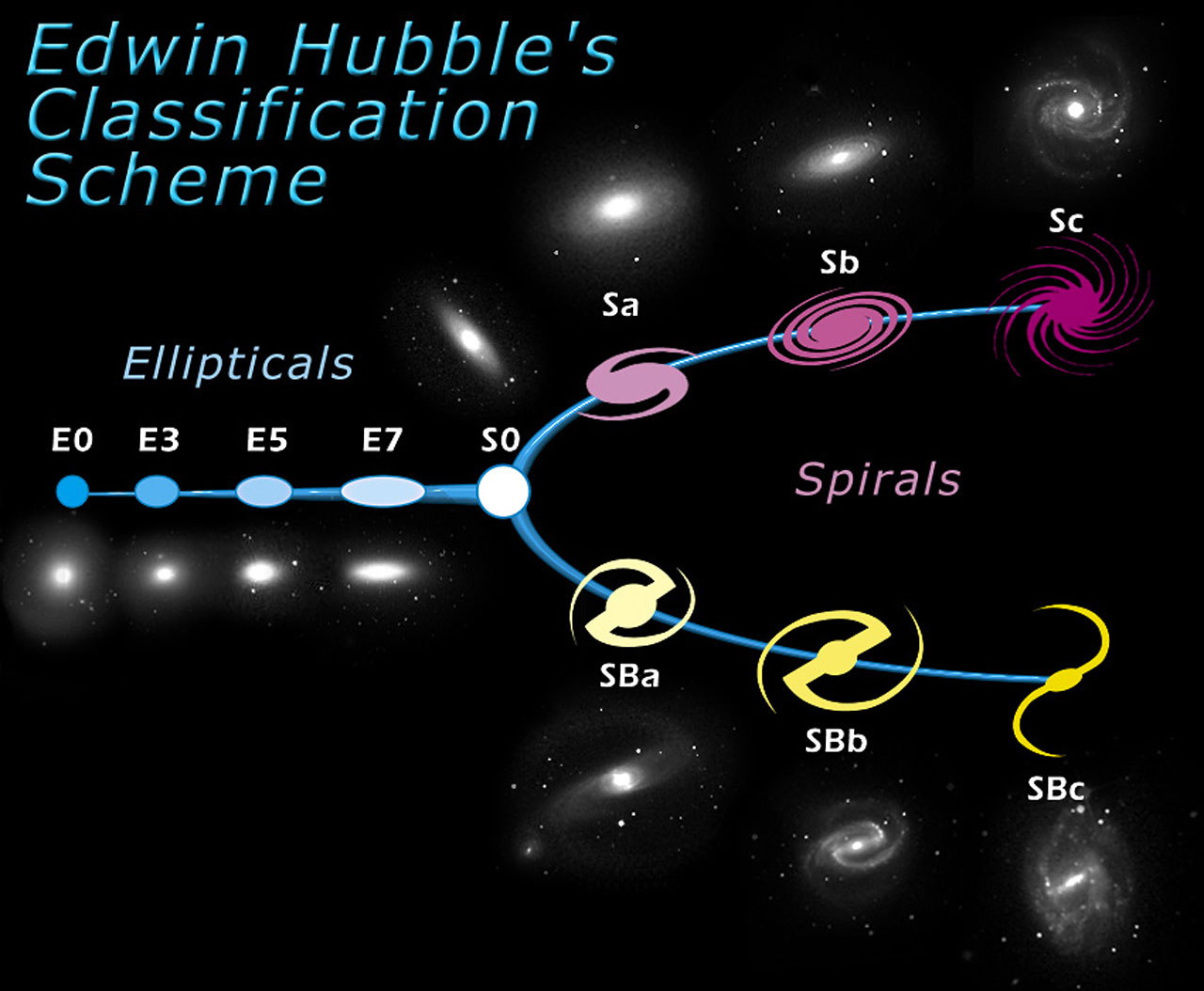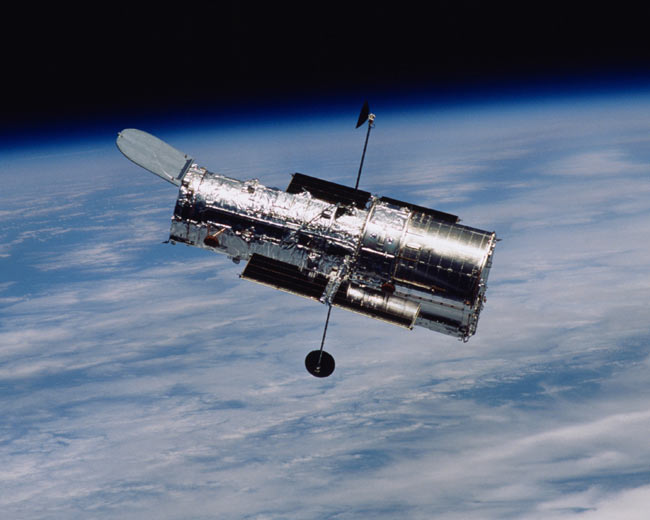Galaxy Anatomy In Early Universe Was a 'Cosmic Zoo'

The diversity of galaxies in the early universe was as varied as the many galaxy types seen today, a massive Hubble Space Telescope photos survey reveals.
The Hubble photo survey found that the assorted range of galaxy types seen today were also present about 11 billion years ago, meaning that the types of galaxies seen today, which astronomers described as a "cosmic zoo," have been around for at least 80 percent of the universe’s lifespan. The universe is estimated to be 13.82 billion years old.

At the heart of the new study is a galaxy classification system known as the Hubble Sequence. The research team found that this system still applied to galaxies 11 billion years ago. The research will appear upcoming edition of the Astrophysical Journal [See Hubble's Photos of Galaxies from 11 Billion Years Ago]
"This is a key question: when and over what timescale did the Hubble Sequence form?" study lead author BoMee Lee of the University of Massachusetts, said in a statement. "To do this you need to peer at distant galaxies and compare them to their closer relatives, to see if they too can be described in the same way."
The new study is part of the Hubble Space Telescope Cosmic Assembly Near-Infrared Deep Extragalactic Legacy Survey, or CANDLES.
![Find out how Hubble has stayed on the cutting edge of deep-space astronomy for the past 20 years here. [See the full Hubble Space Telescope Infographic here.]](https://cdn.mos.cms.futurecdn.net/qK2xWDesnWUEsoFccAR7pM.jpg)
"The largest project in the history of Hubble, it aims to explore galactic evolution in the early universe and the very first seeds of cosmic stracture at less than 1 billion years after the Big Bang," Hubble officials said in a statement.
The Hubble Sequence divides galaxies into three types based on their appearance. Spiral galaxies in the prime of their lives are full of gas used in star formation. Once that gas runs out, they can transition into a somewhat blob-like elliptical galaxy.
Get the Space.com Newsletter
Breaking space news, the latest updates on rocket launches, skywatching events and more!
A third type of galaxy in the sequence, known as a lenticular galaxy, represents a transitional phase between a middle aged spiral galaxy and an older elliptical galaxy. These kinds of galaxies have a bright bulge like an elliptical galaxy; yet maintain some spiral-like structure as their star-forming gas runs out.
Scientists observed these kinds of galaxies in the early universe.
"This is the only comprehensive study to date of the visual appearance of the large, massive galaxies that existed so far back in time," co-author Arjen van der Wel of the Max Planck Institute for Astronomy in Heidelberg, Germany said in a statement. "The galaxies look remarkably mature, which is not predicted by galaxy formation models to be the case that early on in the history of the universe."

"The Hubble Sequence underpins a lot of what we know about how galaxies form and evolve — finding it to be in place this far back is a significant discovery," Lee said.
Follow Miriam Kramer @mirikramer and Google+. Follow us @Spacedotcom, Facebookand Google+. Original article on SPACE.com.
Join our Space Forums to keep talking space on the latest missions, night sky and more! And if you have a news tip, correction or comment, let us know at: community@space.com.

Miriam Kramer joined Space.com as a Staff Writer in December 2012. Since then, she has floated in weightlessness on a zero-gravity flight, felt the pull of 4-Gs in a trainer aircraft and watched rockets soar into space from Florida and Virginia. She also served as Space.com's lead space entertainment reporter, and enjoys all aspects of space news, astronomy and commercial spaceflight. Miriam has also presented space stories during live interviews with Fox News and other TV and radio outlets. She originally hails from Knoxville, Tennessee where she and her family would take trips to dark spots on the outskirts of town to watch meteor showers every year. She loves to travel and one day hopes to see the northern lights in person. Miriam is currently a space reporter with Axios, writing the Axios Space newsletter. You can follow Miriam on Twitter.









